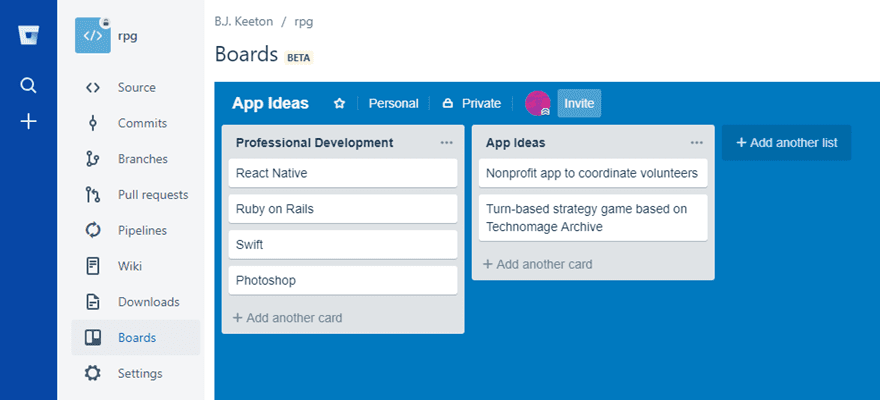

It is not that GitLab is challenging to use, but when it comes to community, size matters.įeel free to see this as anecdotal evidence, but in my personal experience, more communities use GitHub. It also means general familiarity with the platform is widespread. GitHub is much older than GitLab, which means a lot of users that are using the platform for a long time and are very proficient with it. So if you are intending to use Jenkins, GitLab’s integrated CI tool is probably not an appeal. GitHub doesn’t fall short of GitLab when it comes to Jenkins integration. That said, according to JVM Ecosystem report 2020, the vast majority of DevOps still use Jenkins, even if they are using GitLab for the repository.
GITBOX VS GITHUB CODE
That means that if you have limited experience with CI/CD pipelines, GitLab could be your portal into this world of efficient code testing and continuous delivery. One of the major advantages of GitLab is that it has an integrated CI tool that requires little to no setup to get started with. This may be a somewhat biased list, and would probably discard any advantages GitHub has over GitLab, it is still a pretty exhaustive list of differences.
GITBOX VS GITHUB FULL
GitLab’s website has a full page dedicated to the shortcomings of GitHub Actions compared to their infrastructure. The question is, now that it is out, how does it compare to GitLab? GitHub has only recently added GitHub Actions in late 2019, probably largely in response to GitLab’s growing market share. It’s important to know from the start what you are going to get from one platform or another so you can make an informed decision. When having to choose between two platforms, the differences between them are going to be the driving force of the decision. Although Enterprise Edition remained public-facing, and all changes to the code could be viewed. Under this new business model, it made sense to keep the Community features completely free and open-source while the Enterprise Edition moved to a more limited license. announced an open-core business model, keeping the code open source but offering additional features and services to paying customers. And the Enterprise Edition, which was aimed to provide companies the tools they needed. The community edition was aimed at individuals and open source projects. GitLab’s core product remained open source as it gained popularity, splitting into two code bases. He then founded GitLab inc, and hired Dmitriy Zaporozhets to work in the company so he could focus on GitLab full time.

To this day, not many alternatives provide the same robust core features for free.Ĭurrent CEO, Sid Sijbrandij, saw the project in 2012 and was impressed by the quality of code. This is not surprising given it was the only such platform at the time of its conception. The vast majority of open-source code repositories are hosted on GitHub. GitHub is so popular that it has become almost a synonym with Git. GitHub is a repository hosting platform, offering everything a developer might need in terms of issue tracking and code management in one convenient free package. Most people are happy to invest their time and knowledge into a project they are passionate about, but ask them to spend money and a large number of them would walk away.

Having to pay hard-earned cash to host open-source code would be a major barrier for the open-source community. Open-source code as it exists today would likely not be feasible without a free platform to host it on.

However, the main drive for Git Adoption is the free and accessible nature of hosting code repositories on platforms like GitHub and GitLab.
GITBOX VS GITHUB DRIVER
Part of the reason is the preference of developers for Git as a versioning system with the main driver being local commits. Git has been the leading version control system for quite some time now, overtaking SVN around 2018. It becomes even more vital for public open-source projects, which could not exist without Git. Having control of what gets put into the code is critical. Going back in time is far from the only feature of version control, though. This allows, at the very core, the option to go back to earlier versions of the code in case something broke. The idea behind version control is that every time a change is made, a snapshot is taken of the entire codebase (sometimes including things that aren’t code). In a lot of people’s minds, GitLab is the place to go for private repositories and GitHub for the public ones. It is interesting to note that even though GitHub now offers free private repositories, it is not able to compete with GitLab quite yet. This is quite a significant number, and means that GitLab supplies some very desirable features. According to the Snyk JVM Ecosystem report 2020, the leading repository among Java Developers was GitLab, with 35% of the surveyed developers picking it over others.


 0 kommentar(er)
0 kommentar(er)
